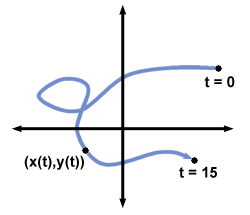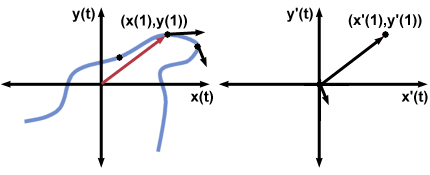Please wait while we process your payment
If you don't see it, please check your spam folder. Sometimes it can end up there.
If you don't see it, please check your spam folder. Sometimes it can end up there.
Please wait while we process your payment
Get instant, ad-free access to our grade-boosting study tools with a 7-day free trial!
Learn more



This site is protected by reCAPTCHA and the Google Privacy Policy and Terms of Service apply.
Create Account
Select Plan
Payment Info
Start 7-Day Free Trial!

Annual
2-49 accounts
$22.49/year + tax
50-99 accounts
$20.99/year + tax
Select Quantity
Price per seat
$29.99 $--.--
Subtotal
$-.--
Want 100 or more? Request a customized plan
You could save over 50%
by choosing an Annual Plan!

SAVE OVER 50%
compared to the monthly price!
| Focused-studying | ||
| PLUS Study Tools | ||
| AP® Test Prep PLUS | ||
| My PLUS Activity | ||
$22.49/month + tax
Save 25%
on 2-49 accounts
$20.99/month + tax
Save 30%
on 50-99 accounts
| Focused-studying | ||
| PLUS Study Tools | ||
| AP® Test Prep PLUS | ||
| My PLUS Activity | ||
No Fear provides access to Shakespeare for students who normally couldn’t (or wouldn’t) read his plays. It’s also a very useful tool when trying to explain Shakespeare’s wordplay!
Erika M.
I tutor high school students in a variety of subjects. Having access to the literature translations helps me to stay informed about the various assignments. Your summaries and translations are invaluable.
Kathy B.
Teaching Shakespeare to today's generation can be challenging. No Fear helps a ton with understanding the crux of the text.
Kay H.
No Fear provides access to Shakespeare for students who normally couldn’t (or wouldn’t) read his plays. It’s also a very useful tool when trying to explain Shakespeare’s wordplay!
Erika M.
I tutor high school students in a variety of subjects. Having access to the literature translations helps me to stay informed about the various assignments. Your summaries and translations are invaluable.
Kathy B.
Teaching Shakespeare to today's generation can be challenging. No Fear helps a ton with understanding the crux of the text.
Kay H.
Create Account
Select Plan
Payment Info
Start 7-Day Free Trial!
You will only be charged after the completion of the 7-day free trial.
If you cancel your account before the free trial is over, you will not be charged.
You will only be charged after the completion of the 7-day free trial. If you cancel your account before the free trial is over, you will not be charged.
Order Summary
Annual
7-day Free Trial
SparkNotes PLUS
$29.99 / year
Annual
Quantity
51
PLUS Group Discount
$29.99 $29.99 / seat
Tax
$0.00
SPARK25
-$1.25
25% Off
Total billed on Nov 7, 2024 after 7-day free trail
$29.99
Total billed
$0.00
Due Today
$0.00
Promo code
This is not a valid promo code
Card Details
By placing your order you agree to our terms of service and privacy policy.
By saving your payment information you allow SparkNotes to charge you for future payments in accordance with their terms.
Powered by stripe
Legal
Google pay.......



Please wait while we process your payment

Sorry, you must enter a valid email address
By entering an email, you agree to our privacy policy.
Please wait while we process your payment

Sorry, you must enter a valid email address
By entering an email, you agree to our privacy policy.
Please wait while we process your payment

Your PLUS subscription has expired
Please wait while we process your payment
Please wait while we process your payment

Velocity, Acceleration, and Parametric Curves
Suppose an ice skater named Lindsay is gliding around on a frozen coordinate plane. Define functions x(t), y(t), so that at time t (in seconds) Lindsay's position on the coordinate plane is given by (x(t), y(t)). If Lindsay starts at time t = 0 and stops at time t = 15, she will trace out the parametric curve consisting of the points (x(t), y(t)) with t in the interval [0, 15], perhaps like the one sketched below.

Two questions naturally arise. First, what is Lindsay's velocity (direction and speed) at any given moment? Second, how is it changing (that is, what is her acceleration)? It is actually fairly easy to answer these questions using the derivative.
Lindsay's velocity at time t can be represented by an arrow with a certain direction and length, called the velocity vector. The direction of the vector will indicate her instantaneous direction, and the length of the vector will equal her instantaneous speed. We would expect the direction of the velocity vector at time t to be the same as the direction of the tangent line at (x(t), y(t)) to the curve describing Lindsay's path. If we imagine the velocity vector to have its tail at the origin of a coordinate plane (rather than at a point of tangency to the parametric curve), we need only specify the coordinates of its head to give its length and direction.
It is fairly easy to see that the correct coordinates for the head of the velocity vector at time t0 are simply
| (x'(t0), y'(t0)) |
where the derivatives are with respect to t. The speed is equal to the length of this velocity vector:
 |
This is all illustrated in the figure below.

Note that the head of the velocity vector (with tail fixed at the origin), located at (x'(t), y'(t)) at time t, traces out another parametric curve. The velocity vector of this new curve at time t0,
| (x''(t0), y''(t0)) |
is called the acceleration vector of the original curve at time t0. Its direction indicates the instantaneous direction of motion of the head of the velocity vector and its length is the speed at which the head of the velocity vector is moving.
It is important to realize that there is a difference between the length of the
acceleration vector, which is the rate at which the velocity it changing, and the rate at
which the speed is changing. For instance, if an object is moving in the circular path
(x(t), y(t)) = (cos(t), sin(t)), then the speed is constant (for (x'(t), y'(t)) = (- sin(t), cos(t)) has length  = 1, yet the acceleration is
nonzero and has constant length -- (x''(t), y''(t)) = (- cos(t), - sin(t)) has length
= 1, yet the acceleration is
nonzero and has constant length -- (x''(t), y''(t)) = (- cos(t), - sin(t)) has length
 = 1. One can think of this phenomenon as follows: the
acceleration contains contributions from the rate of change of the speed, and from the rate
of change of the direction of the velocity.
= 1. One can think of this phenomenon as follows: the
acceleration contains contributions from the rate of change of the speed, and from the rate
of change of the direction of the velocity.
Please wait while we process your payment





